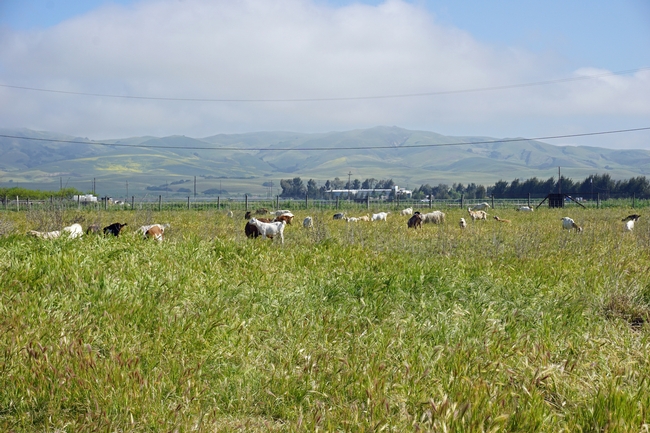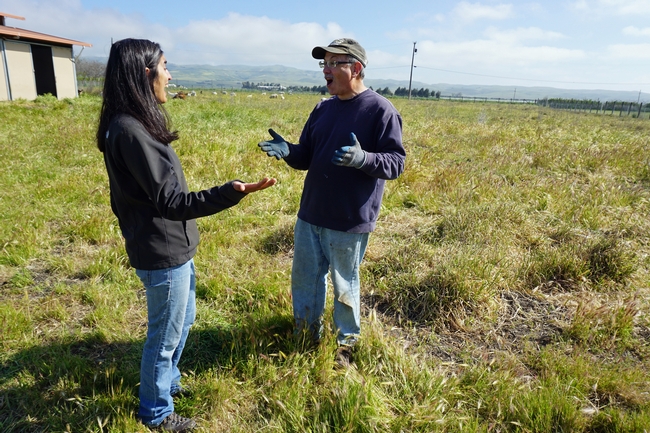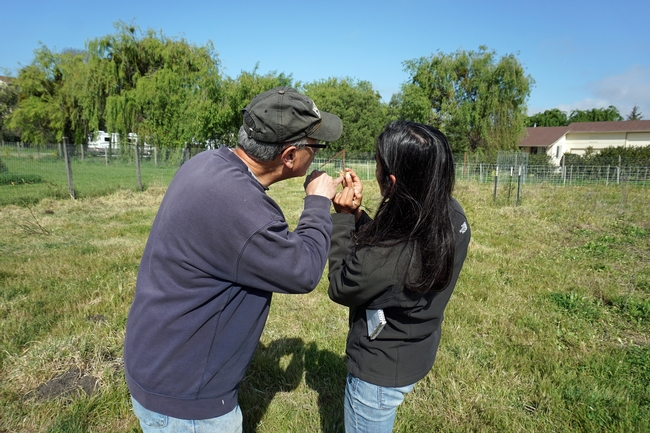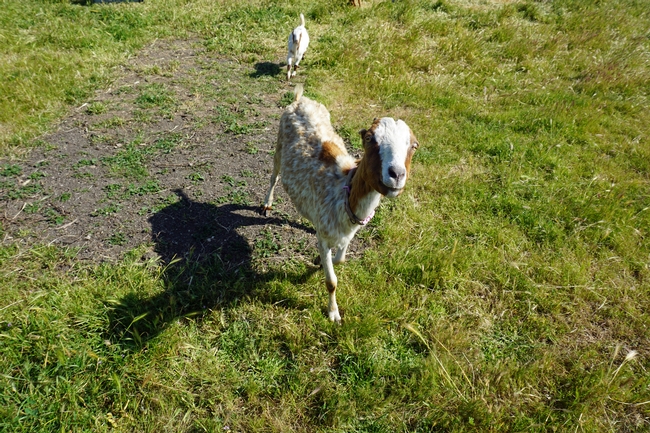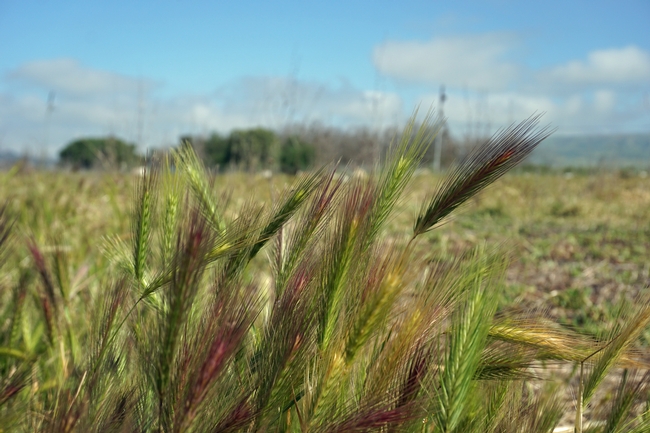When San Juan Bautista resident Michael Cent was looking for ways to rehabilitate a large backyard pasture infested with invasive foxtail weeds, he called Devii Rao, the UC Cooperative Extension range and natural resources advisor in San Benito County.
Though Rao works mainly with large, commercial producers, she was intrigued by Cent's well thought out plans to replace foxtail with more desirable plants using sustainable practices. She paid him a visit.
Behind the home sits a two-acre fenced pasture where previous owners grazed llamas and ran horses. The picturesque setting adjoins San Juan Creek and frames a panorama of farm fields and the Diablo Mountain Range. But the tableau was spoiled by fence-to-fence foxtails, an exotic plant that hails from the Mediterranean, offers poor forage value and presents nuisance characteristics.
“The seed heads get stuck in the eyes, ears and noses of livestock and pets,” Rao said. “Foxtail is an annual grass that is difficult to control, but that didn't stop Michael Cent from trying.”
Cent is a pharmacist and self-described plant nerd.
“He turned his foxtail problem into a science project,” Rao said.
As a pharmacist, Cent said he is technically a chemist. “When you look at botany as chemistry, if you drill down into all the chemical reactions going on, it's amazing.”
Cent tested the soil Ph and nutrients. He identified 12 plants that would thrive under his pasture conditions and potentially out-compete the foxtails.
“In my research, much of what I see is not native,” Cent said. “My expectations to plant only natives have tempered. It's good to do within reason, but if a benefit of a non-native species outweighs a lesser advantage of being native, I'll go with the non-native species.”
Cent borrowed a tractor to break up the soil and reseeded by hand with his chosen grass and broad leaf plants. He kept detailed notes.
- Birdsfoot trefoil grew a dense carpet that choked out everything.
- Crimson clover germinated and grew quickly early in the season, but didn't do as well as anticipated.
- Harding grass was seeded specifically to out-compete the bristly ox-tongue, another undesirable plant.
- Chicory has a deep taproot, which helps it survive the dry season.
- Oxalis has come in like gangbusters, even though it wasn't seeded.
At first Cent regularly mowed the pasture to keep down the foxtails, but when the job became forbidding, he contracted with a company to bring in goats to aid control.
After four years of effort to overcome foxtail with grazing goats and seeding plants, Cent has come to a realization.
“I thought I could set it in motion and it would take care of itself,” Cent said. “But it's going to take a sustained effort.”
What drives Cent's devotion to rehabilitating a pasture with extensive plant research and management? The miracle of life, he said.
“The marvel of putting a seed in the ground, managing it and seeing what becomes of it. It's fascinating,” Cent said.
